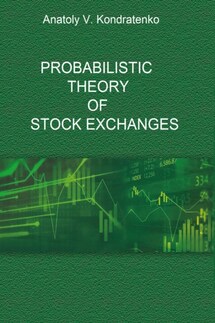Probabilistic Economic Theory - страница 29
1. The Neoclassical Model of Supply and Demand
An old joke in a well-known economics textbook says that creating an economist is as simple as teaching a parrot to pronounce words “supply” and “demand” (S&D below). My former managerial economics lecturer shared his own humor on this subject: If one understands the theory of S&D elasticity, you‘ve got yourself a new economics professor! These jokes reflect an important role which is played in economics by the S&D concept, the formal realization of which we will call the traditional neoclassical model of S&D. Below we will give the most widespread version of the description of this model from the textbook [1]. To start with, we will see how economics defines the demand of each individual buyer [1]. It is possible to present demand in the form of a scale or a curve showing quantity q of a product that a consumer desires, is able to buy at each given prices p, and at a certain period of time. Further, the radical property of demand consists of the following: at an invariance of all other parameters (ceteris paribus), reduction of price leads to the corresponding increase of the quantity demanded. And, ceteris paribus, the inverse is also true; an increase in price leads to the corresponding reduction of the quantity demanded. In short, there is an inverse relationship between the price p and the quantity q demanded. Economists call this inverse relationship the law of demand.
The simplest explanation of the law of demand: a high price discourages the consumer to buy, and a low price strengthens their desire to buy. The additivity rule is used to obtain the demand function of the whole market, i.e., all individual demand functions are simply summarized for obtaining the market demand function D(p). The graph of the traditional demand function for a grain market is displayed in the Cartesian (P, Q)-plane in Fig. 1.
This example is intentionally taken from the textbook [1] where it has number 3–1. In order to avoid misunderstanding, we will make some remarks concerning this and all other drawings in this work. First, unlike the textbook [1], we plot price p on the horizontal axis P and quantity q on the vertical axis Q in the Cartesian (P, Q)-plane because price is an independent variable in all our theoretical constructions and conclusions. In exact sciences, an independent variable can only be plotted on the horizontal axis. Second, we measure quantity of grain in metric tons (ton) per a year (ton/year), and the price in American dollars ($) per ton ($/ton).
Fig. 1. Graph of the traditional neoclassical demand function D(p) for the model market of grain [1].
Thus, according to the textbook [1], demand is simply the plan or intention of a buyer concerning product purchase which is expressed in the form of tables (or curves). We will discuss in detail later how adequately such tables and curves can reflect the behavior of buyers in the market, and we will now make some remarks concerning the form of representation of buyer’s intentions in the given model.
First, the law of demand itself follows from neither an experiment, nor a theory; it is a statement as a whole which is consistent with common sense and elementary conclusions from real life. However, all of these conclusions are the result of observations of the behavior of real market prices and demand in the day-to-day activities of markets. In the market we only concern ourselves with real prices, real transactions, and the real sizes of these transactions. Sometimes, attention is given to total demand, but not at all to market demand functions or tables. Therefore, direct transfer of this empirical law on a quite abstract, uncertain and obscure demand function of an individual buyer is unnecessary.







